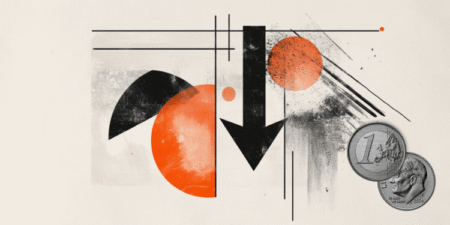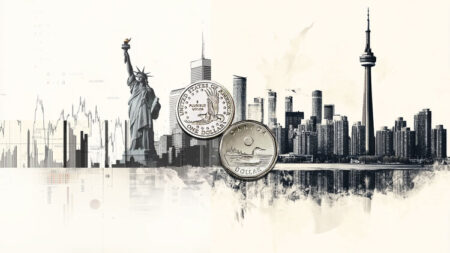Gold price (XAU/USD) tumbles below $4,100 during the Asian trading hours on Wednesday. The precious metal extends the decline after facing its steepest selloff in over a decade as traders booked profits following an extended rally that saw the commodity rise for nine straight weeks while hitting successive records.
Additionally, the United States (US)-China trade tensions appear to have eased as both sides are slated to work out a deal ahead of the November 1 tariff deadline. This, in turn, could undermine the safe-haven demand.
On the other hand, concerns over the impact of the US government shutdown and ongoing fears about unsustainable government debt globally might help limit the yellow metal’s losses. The growing expectation that the US Federal Reserve (Fed) will deliver another quarter-point rate cut in the October policy meeting could lift the Gold price. Lower interest rates could reduce the opportunity cost of holding Gold, supporting the non-yielding precious metal.
Looking ahead, traders will closely monitor the US September Consumer Price Index (CPI) inflation data later on Friday due to the government shutdown-driven data drought.
Both headline and core CPI are expected to show a rise of 3.1% YoY in September. Any signs of a hotter-than-expected US inflation could lift the US Dollar (USD) and weigh one the USD-denominated commodity price in the near term.
Daily Digest Market Movers: Gold faces some selling pressure as rally cools
- The US government shutdown has entered its fourth week as the Senate on Monday failed for the 11th time to advance a House-passed measure to fund the government and end the ongoing shutdown. The 50-43 vote fell mostly along party lines.
- US President Donald Trump last week threatened a new 100% tariff on China. He softens his stance over the weekend, saying that high tariffs on China are unsustainable and expressing willingness for smoother relations with China.
- Trump late Wednesday predicted an upcoming meeting with his Chinese President Xi Jinping would yield a “good deal” on trade. However, he also conceded that the highly anticipated talks may not happen.
- US Treasury Secretary Scott Bessent is set to meet with his Chinese counterparts to discuss a de-escalation of trade tensions ahead of the U.S.-China trade talks.
- Trump said late Tuesday that he did not want a “wasted meeting” after a plan to have face-to-face talks with his Russian counterpart, Vladimir Putin, about the war in Ukraine was put on hold, per the BBC.
- Traders are currently pricing in nearly a 99% possibility that the US central bank will cut interest rates again next week, followed by another reduction in December, according to the CME FedWatch tool.
Gold retains a positive tone in the longer term
Gold price trades in negative territory on the day. According to the daily timeframe, the constructive outlook of the precious metal remains intact, characterized by the price holding above the key 100-day Exponential Moving Average. However, further consolidation or temporary sell-off cannot be ruled out as the 14-day Relative Strength Index (RSI) is pointing to the midline, indicating the neutral momentum in the near term.
On the bright side, the first upside barrier to watch is $4,140, the high of October 15. Any follow-through buying above this level could pave the way to $4,330, the high of 16. Further north, the next hurdle is seen in the $4,370-$4,380 zone, representing the all-time high and the upper boundary of the Bollinger Band.
In the bearish case, the 4,000 psychological level acts as a key support level for XAU/USD. The additional downside filter emerges at $3,947, the low of October 10. The next contention level is located at $3,838, the low of October 3.
Gold FAQs
Gold has played a key role in human’s history as it has been widely used as a store of value and medium of exchange. Currently, apart from its shine and usage for jewelry, the precious metal is widely seen as a safe-haven asset, meaning that it is considered a good investment during turbulent times. Gold is also widely seen as a hedge against inflation and against depreciating currencies as it doesn’t rely on any specific issuer or government.
Central banks are the biggest Gold holders. In their aim to support their currencies in turbulent times, central banks tend to diversify their reserves and buy Gold to improve the perceived strength of the economy and the currency. High Gold reserves can be a source of trust for a country’s solvency. Central banks added 1,136 tonnes of Gold worth around $70 billion to their reserves in 2022, according to data from the World Gold Council. This is the highest yearly purchase since records began. Central banks from emerging economies such as China, India and Turkey are quickly increasing their Gold reserves.
Gold has an inverse correlation with the US Dollar and US Treasuries, which are both major reserve and safe-haven assets. When the Dollar depreciates, Gold tends to rise, enabling investors and central banks to diversify their assets in turbulent times. Gold is also inversely correlated with risk assets. A rally in the stock market tends to weaken Gold price, while sell-offs in riskier markets tend to favor the precious metal.
The price can move due to a wide range of factors. Geopolitical instability or fears of a deep recession can quickly make Gold price escalate due to its safe-haven status. As a yield-less asset, Gold tends to rise with lower interest rates, while higher cost of money usually weighs down on the yellow metal. Still, most moves depend on how the US Dollar (USD) behaves as the asset is priced in dollars (XAU/USD). A strong Dollar tends to keep the price of Gold controlled, whereas a weaker Dollar is likely to push Gold prices up.
Read the full article here
















